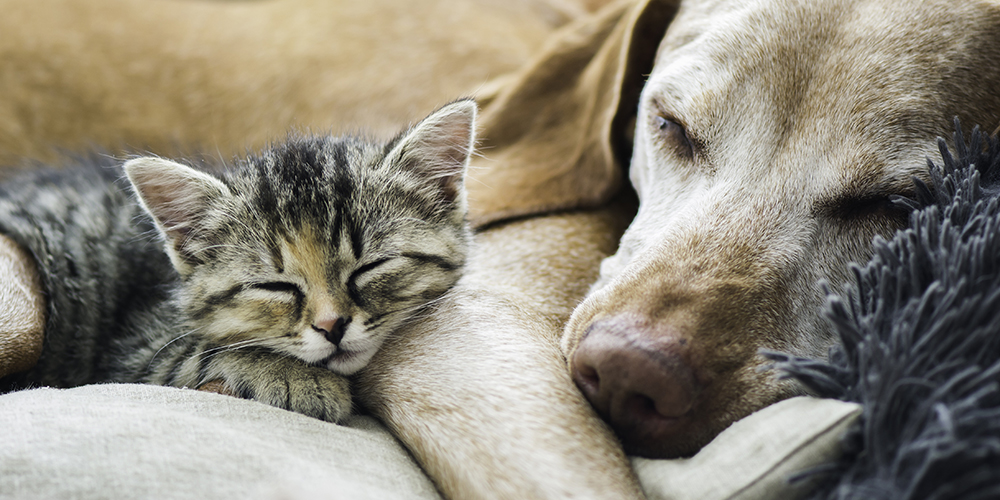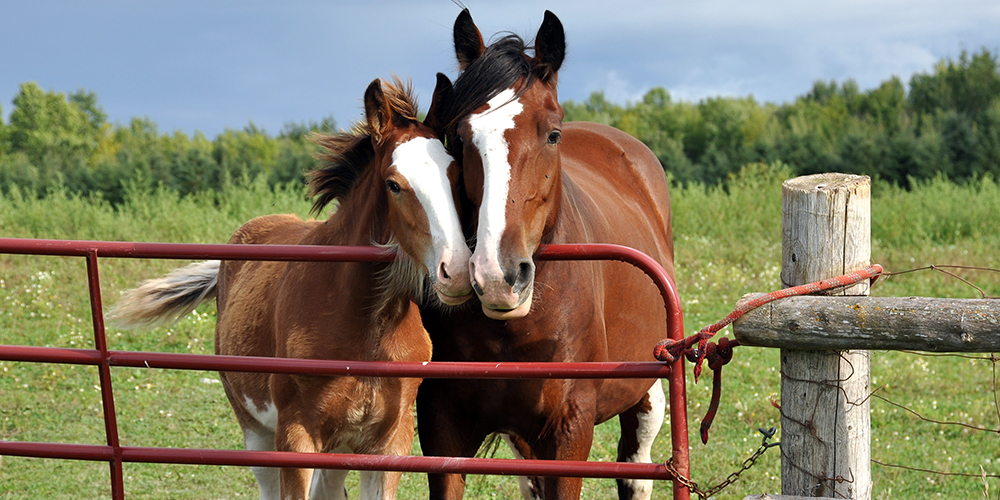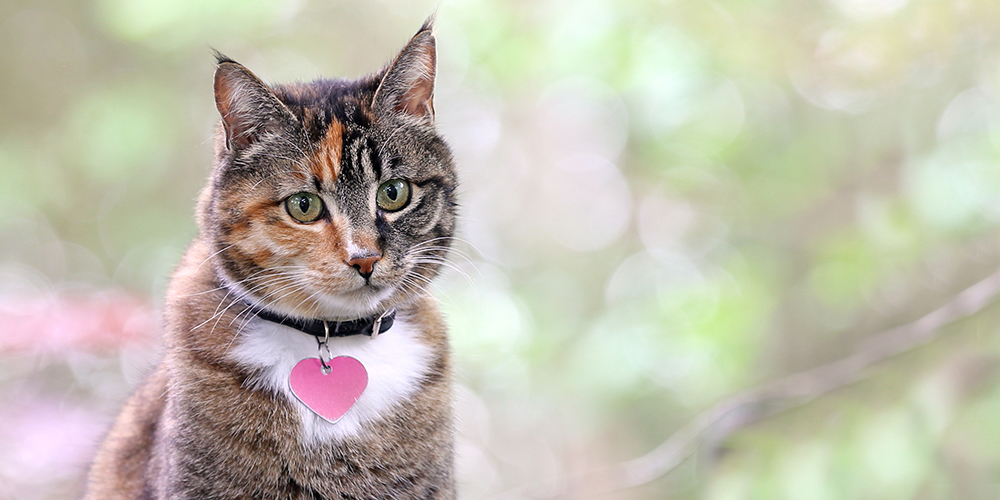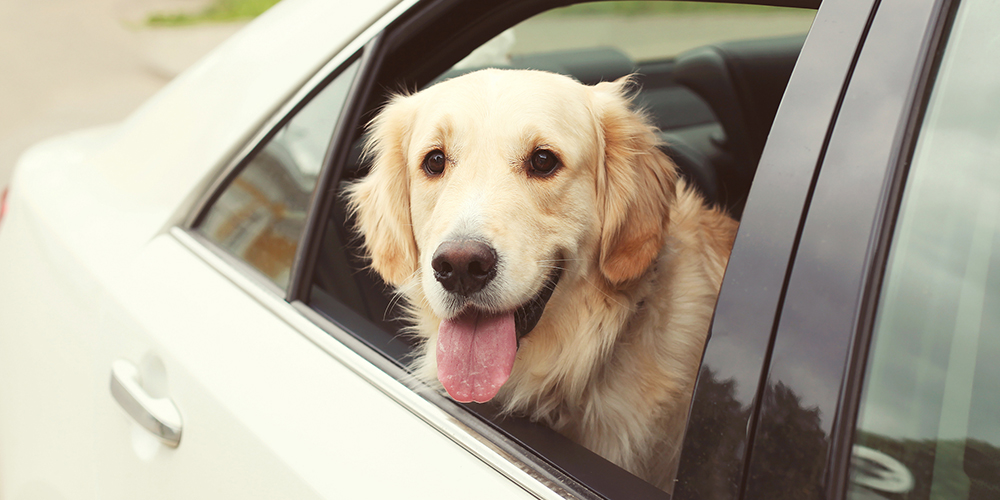Lock Blog
A resource for consumers, locksmiths, and security professionals
A resource for consumers, locksmiths, and security professionals

Security does not always involve keeping people locked out and keeping your home safe from criminals. Sometimes safety comes from keeping things locked in. Your pets are safest when they are on your property. Your security keeps them from getting lost in a world that they cannot survive in. They also need to be secured differently depending on the situation. A dog that is safe at home does not have the same security as a dog that is safe in a car. And what is safe for a pot-bellied pig might not be safe for your pet rabbit. I have a dog, a tortoise, fish in a backyard pond, and rats. As someone with quite a few pets, I am forced to take into account multiple levels of varying protections. But whether you have a zoo or a cat, you need to take into account the safety of the pet as well as yourself, so it is important that you pay close attention to your security as well as theirs.
The type of enclosure that a pet has determines quite a bit. If they are acclimated to the habitat or kennel, then their mental health should be fine. If they see their home as a cage, the animal will be nervous and non-compliant. Using a carrier/kennel will be most effective when you are starting your training. If the pet grows accustomed to a certain method of travel or a place to sleep, then they will often reject the new home. A kennel is an ideal transport method for dogs and other rambunctious critters that might otherwise run around in the moving car. The kennel should be fastened down in the car, so it will not be thrown around in the event of a collision.
Other than travel, a habitat is a larger area where the pet can move around and play. It will house the animal so that it is confined to a singular safe space. It acts as a home inside of a home. Often it will have some type of gate to keep the pet inside (see 2). Internally the area should be customized, with features that you could not have throughout your home. Those things might be heat-lamps, sand, newspapers, etc. In order to keep your pet safe, happy, and secure, you might need to treat it like an animal, and not like a child. The space you provide your pet will also give you protection. If the animal is not stressed, then it is less likely to attack or act aggressively. A place of its very own can provide that stable state of mind.
Key Take Aways:

Animals often test their limits. Depending on your particular type of pet, the animal might be more set on escaping. Take into account the strength, size, and natural habits of your pet. The heights and distance between post or bars will need to be close enough so that the animal cannot slip through. My neighbor had a dog slip in through their fence and they found it in the backyard. They used a wire mesh to fill the gaps in the fence after they decided to keep her. It may lower curb appeal, but it is surely cheaper than a new gate.
The fence must also be high enough to keep the animal from jumping over it. Horses sometimes try to jump over low fences, and my cousins had a dog (a boxer) that could jump over a 6-foot fence. They were able to build up the fence high enough to keep the dog in. This is most simple with a wooden fence. The gap at the base of the fence is also important. Russian tortoises, as well as any animal that digs, will make a hole so that they can slip out. That can be solved by lining the fence with stepping stones (large flat stones). But if your pet is slipping out without digging, you will need to build up the ground to close the gap.
You may be able to anticipate the escape behavior of certain species and breeds, but mostly, fences need a bit of trial and error. Animals have unique personalities, and some may have very different instincts than any encyclopedia could prepare you for. The fence should protect against predators that are indigenous to the area, as well as any other type of unwanted visitor. If the fence is open enough that people can see the yard it may harm or help your pet. If you have a dog, most criminals will be deterred from trying to enter the property. If you have an exotic pet, someone may be tempted to steal it. If the dog is rare, or of value, a see-through fence might also put it in danger.
Key Take Aways:
Any type of gate that you have needs to take several things into account so that you can adequately plan for the security of the gate. The most important things to consider are the height, weight, and intelligence of the pet. Something like a honey badger is intelligent enough to open most any gate, no matter the construction. Pigs can also open several types of gates, such as latched and lift gates. A Sulcata tortoise, with an average weight of 95 pounds, fully grown, will test the strength of the gate. A large tortoise, such as this, loves to walk every inch of the property and bash and pull on every surface. A strong gate with a sturdy lock is necessary. If the gate is too low, the pet may also be able to jump over it. These gates may be inside the house or on an outside fence. Indoor gates are most commonly weaker because they are semi or nonpermanent. Find out what type of gate you can use, and then find out where it would be most effective.
Key Take Aways:
When dogs go out into the world they are often legally supposed to be on a leash. The leash is a great way to train an animal and assure that it is safe as it exercises. Some animals can be trained to walk on leashes. Pigs, cats, and even iguanas, can all be leash trained. The success of the training will depend on your understanding of the pet’s psychology. Make sure that your handling of the leash does not harm the pet. Harmful leash behavior can be tugging that strangles/hurts the animal or giving them enough freedom that they injure themselves. A leash can be made of fabric or chain. The better choice will most definitely be a fabric leash. Chains can be very heavy, and misuse will more easily harm the animal. For example, the slack line of a rope that swings into the animal will inflict no pain, versus a chain striking the animal.
Other than walking, the leash can be used to restrict the animal’s movement. Rather than the use of fences, gates, and habitats you may be tempted to just tie up the animal. This type of security is very similar to bike safety. The added hurdle is that the thing you are trying to secure is alive. Choosing this approach to your animal’s safety depends a lot on your particular pet, and its personality. If the animal is always trying to escape, then this provides very little protection. An animal that is anchored can also be stolen. It puts too much at risk without offering enough in return. It is definitely not a method of protection that you should rely on. Also, consider that if the animal does get free, it will still, most likely, have a part of its leash. This creates a choking hazard once the animal begins to walk around.
Key Take Aways:

Collars and unique markers offer an amazing amount of protection. They offer the assurance that if your layers of animal security fail and they escape, you may be able to recover them. Other than the fear that the animal may be harmed by a car, starve, or some other horror, there is the fear of what will happen when someone finds it. Are they going to adopt your pet? Is the animal going to be placed in a shelter? Is that shelter going to harm your pet?
Some form of identification will go a long way in never having to deal with any of those hypotheticals. Your pet can be returned to you passively if your information is on the collar. Or you can actively seek out the animal by calling shelters and talking to neighbors. Pictures and documentation can also assist in making the proper professionals aware of the situation. Always make sure that the contact information you provide is up to date, and that your email and phone do not have full mailboxes.
Make it as easy as you can on someone who is trying to do the right thing. I am the kind of guy that tries to help an animal in need. It is very difficult. Often the animal is scared. Sometimes it is injured. Mostly when I see one roaming around it is in a very busy area with a lot of cars, and perhaps low visibility. The fact that you might get injured trying to help makes it all the more pressing to help because the animal is already in the dangerous situation you want to avoid. After doing all of this, I have found what are obviously pets, without a collar or any identification. That means that I will have to take it to a shelter. If it is the middle of the night, I will have very limited options on where I can take it.
Once I found a little Chinese Crested, named Ringo. Along with his name, his collar also had three phone numbers. One was out of service, another had a full mailbox, and the last belonged to a very nice but confused old woman, who did not own a dog. Because I am serious about pet safety I did some sleuthing. I found the person’s address by doing a reverse phone number search. The house was a block away. No one was home. Went to the shelter and gave them all the info I had gathered. Thankfully the shelter informed me the next day that they were able to get in contact with the owner. But that was only because the owner had been going around town checking with every shelter. People do their best to help in these situations. So do your best to help them, help you.
Key Take Aways:
A dog door is going to compromise your home security, but the severity can be mitigated. The top thing to consider is, is it functional for the pet? Although these entrances are referred to as dog doors, they can be used to allow easy exiting and entering of the house for any pet. It may be tempting for you to make your door some sort of agility test for your pet so that it is more difficult for an intruder to access, but this will compromise your practicality. If the animal is sick, or as it gets older, it may not be able to maneuver properly. When the animal can no longer use the door, then it is no longer anything other than a security risk because you will need to let your pet in and out manually.
The pet may be able to squeeze into a smaller opening, for example. It would also be more appealing to have a smaller door to decrease the likelihood of a burglar using the opening to enter the house. No matter how small you make the opening there is still an opening. To increase your security, the dog door will need to be out of the way of a human entrance point. When a person that has moved a part of themselves into the dog door there must be enough restriction and distance so that the intruder cannot manipulate the door handle. A double sided deadbolt can also assist if the dog door is already near a human entry point.
In terms of the pet’s safety, both the inside and the outside of the home will need to be secure. The increase of the pet’s range to explore will also give them more opportunities to escape. The outside will also give them access to things they may try and eat. It is important to know dietary restrictions as they pertain to your pet. Fence off, or remove anything that could be harmful to the pet, if consumed. Also, be wary of the types of wild animals in your neighborhood. Things like raccoons and coyotes can kill, harm, or harass your pets. These same creatures will be able to enter your home if you install a door large enough to accommodate them.
Key Take Aways:
Things left lying around the house and yard may cause a problem. The animal can knock over one of these obstacles, chew on wires, etc. If there is a folding table against a wall, a pet can be hurt if it falls or even get pinned under it. If the object is precariously placed it may fall over on its own. And sometimes your pet may be curious and knock it over. My Sulcata tortoise, Herby, for example, will try and mate with most things and, as a result, break that thing, have it fall on him, or flip himself over. Because he is allowed to walk around the backyard it is important that he be monitored, and that he has a clear path when no one is around. Even if the animal is not hurt severely by a falling object, it will create unnecessary stress, which may lead to a lack of control. Once the animal cannot be controlled, it will become a danger to itself and everyone around it.
Another big concern about the surroundings are the small objects. When the animal is left alone it may eat something. These objects may be food that will make your pet sick. The items may also be inedible altogether. Try your best to make the home and outside areas accommodating for you pet, but this does not need to be solved by removing the things you need from your home. Take into account where your pet goes, what their behavior is like, and whether it is possible to correct this behavior. Perhaps the only time the pet will be roaming, is when they are directly supervised. The pet may be trained to go into a kennel when you are absent. If the type of animal that you have cannot be domesticated, then it may need to be put into a habitat (See 1).
Key Take Aways:

Driving with a pet can be very dangerous. They can distract the driver if they are not well behaved, and they can be seriously injured in the event of an accident. Because their distraction may cause an accident, it is of the utmost important to secure them. Once they are secured they will also be protected in the event of an accident. The best way to secure them in the car is a crate. The harnesses are too inconsistent. CBC did a very in-depth piece about the lack of regulation in the dog harness industry specifically. The TL;DR version is that the harnesses fail often and catastrophically. You can see more information about carriers and kennels in number 1, but the main thing they offer is that the animal is not being thrown around in the vehicle. Dogs have been known to be thrown through windshields, and in less severe cases, bang into passengers in the car.
Dogs are the most common pet type that people take in the car. AAA and Kurgo conducted a survey where they found that 56% of all the respondents had driven with their dog in the car at least once a month in the last year. AAA also found that taking your eyes off the road for 2 seconds doubles your risk for a crash. A loose dog in the car will take your eyes off the road for more than 2 seconds, and most certainly more than once. And only 16% of all of the respondents had driven while using some form of animal restraint. That still leaves 40% of people putting their own lives, and their dog’s, at risk.
Key Take Aways:
Regardless of whether you have a kangaroo or a cockatoo, every animal that is under your care should be protected. Safety means that you keep them securely in your possession. While you are taking care of your pet, they need to be kept on your property and kept safe while they are there. When you take them off your property, a pet must be supervised and restrained in accordance with the law. Take the necessary precautions to assure that you will be reunited with your animal. Collar them, fit them with trackers, and keep documentation. Make sure that if they do get out into the world you have the best chance of getting them back unharmed. A pet is not a slave. Your bond must be based on love and respect. The most respectful thing you can do for anything you love is protect them. Keep your pet safe and both of you will be happy.
Category: Residential, Safety & Security